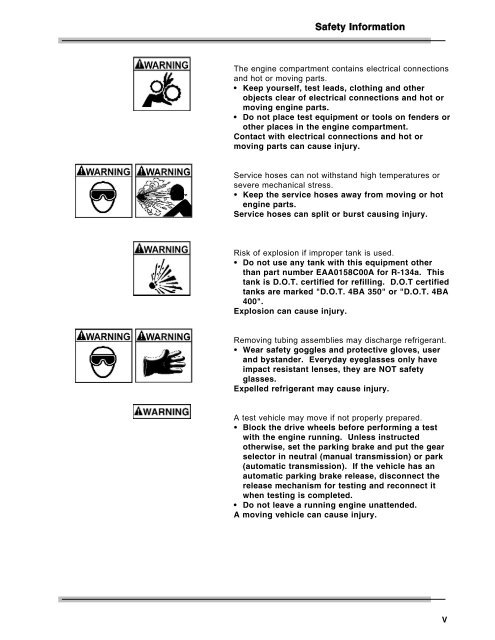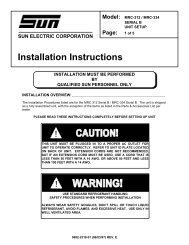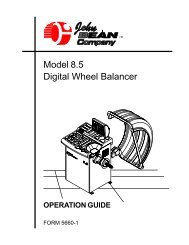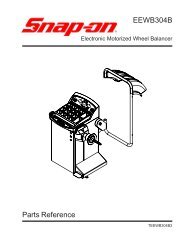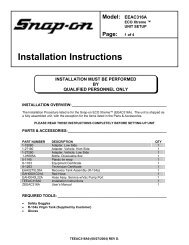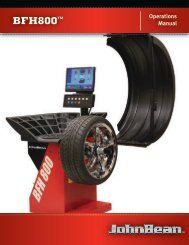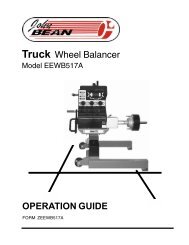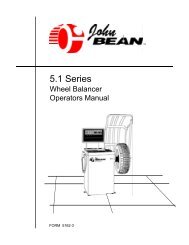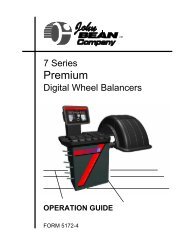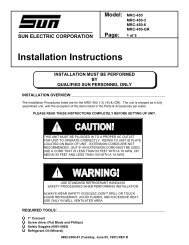here - Snap-on Equipment
here - Snap-on Equipment
here - Snap-on Equipment
You also want an ePaper? Increase the reach of your titles
YUMPU automatically turns print PDFs into web optimized ePapers that Google loves.
Safety Informati<strong>on</strong><br />
The engine compartment c<strong>on</strong>tains electrical c<strong>on</strong>necti<strong>on</strong>s<br />
and hot or moving parts.<br />
• Keep yourself, test leads, clothing and other<br />
objects clear of electrical c<strong>on</strong>necti<strong>on</strong>s and hot or<br />
moving engine parts.<br />
• Do not place test equipment or tools <strong>on</strong> fenders or<br />
other places in the engine compartment.<br />
C<strong>on</strong>tact with electrical c<strong>on</strong>necti<strong>on</strong>s and hot or<br />
moving parts can cause injury.<br />
Service hoses can not withstand high temperatures or<br />
severe mechanical stress.<br />
• Keep the service hoses away from moving or hot<br />
engine parts.<br />
Service hoses can split or burst causing injury.<br />
Risk of explosi<strong>on</strong> if improper tank is used.<br />
• Do not use any tank with this equipment other<br />
than part number EAA0158C00A for R-134a. This<br />
tank is D.O.T. certified for refilling. D.O.T certified<br />
tanks are marked "D.O.T. 4BA 350" or "D.O.T. 4BA<br />
400".<br />
Explosi<strong>on</strong> can cause injury.<br />
Removing tubing assemblies may discharge refrigerant.<br />
• Wear safety goggles and protective gloves, user<br />
and bystander. Everyday eyeglasses <strong>on</strong>ly have<br />
impact resistant lenses, they are NOT safety<br />
glasses.<br />
Expelled refrigerant may cause injury.<br />
A test vehicle may move if not properly prepared.<br />
• Block the drive wheels before performing a test<br />
with the engine running. Unless instructed<br />
otherwise, set the parking brake and put the gear<br />
selector in neutral (manual transmissi<strong>on</strong>) or park<br />
(automatic transmissi<strong>on</strong>). If the vehicle has an<br />
automatic parking brake release, disc<strong>on</strong>nect the<br />
release mechanism for testing and rec<strong>on</strong>nect it<br />
when testing is completed.<br />
• Do not leave a running engine unattended.<br />
A moving vehicle can cause injury.<br />
V


